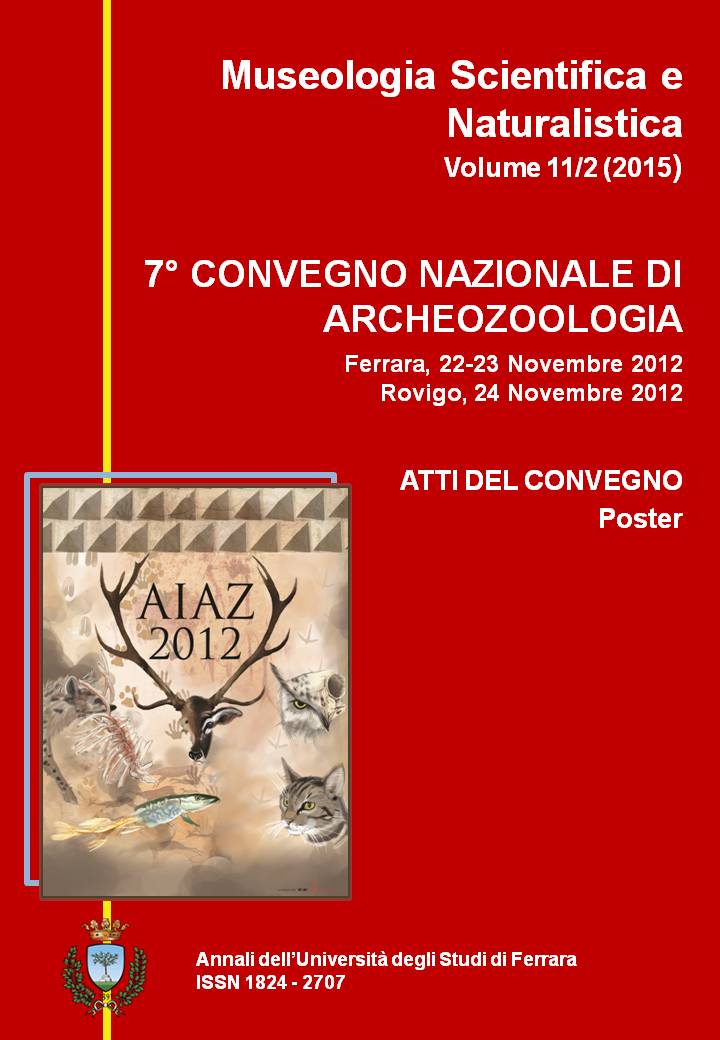L'impiego dei rimontaggi ossei in due realtà del Paleolitico Medio: Abric Romani e Riparo Tagliente
DOI:
https://doi.org/10.15160/1824-2707/963Abstract
Riassunto - Lo studio e l’applicazione dei rimontaggi ossei, tecnica impiegata in archeologia a partire dagli anni ‘70 (De Mortillet 1881, 1894; Spurrell 1880) si basa sulla ricostruzione di elementi rotti o fratturati, al fine di stabilire i processi di formazione, risolvere questioni legate allo spostamento verticale dei resti, valutare i processi post-deposizionali (Hofman 1981, 1986; Van Noten et al. 1978; Villa 1982; Villa et al. 1985, 1986) e riconoscere le aree di attività dei neandertaliani (Larson, Ingbar 1992; Leroi-Gourhan, Brezillon 1972). Nel presente studio si propone l'applicazione di questa metodologia nei livelli musteriani I e Ja dell’Abric Romaní (Capellades, Spagna) e 37 di Riparo Tagliente (Verona, Italia). Dopo aver determinato la modalità di sfruttamento dei taxon su base tassonomica e tafonomica, i rimontaggi vengono effettuati in questo modo: analisi dei resti per singoli quadrati (differenziazione dei resti secondo taxon e taglia), per quadri adiacenti e globalmente, analizzando tutti i quadrati dell'area indagata. Una volta effettuato il lavoro pratico, tutti i dati vengono analizzati ed elaborati, per ottenere la distribuzione spaziale dei livelli indagati. Questa metodologia, anche grazie alla correlazione con i focolari e le strutture identificate, permetterà di valutare le differenze tra i pattern occupazionali, le attività di sussistenza, il livello di complessità dei gruppi, le aree domestiche, il periodo e la durata dell’occupazione, all'interno delle due realtà mediterranee.
Summary - Bones refitting use in two Middle Palaeolithic sites: Abric Romaní and Riparo Tagliente
The study and the application of bones refitting, technique adopted in archaeology since the 70's, (De Mortillet 1881, 1894; Spurrell 1880) is based on the reconstruction of broken and fractured elements to determine formation process, to resolve question about remains vertical movements, to evaluate post-depositional process (Hofman 1981, 1986; Van Noten et al. 1978; Villa 1982; Villa et al. 1985, 1986) and to recognize Neandertal's activities areas (Larson, Ingbar 1992; Leroi-Gourhan, Brezillon 1972). The aim of this paper is to present the application of this metodology in Mousterian levels I and Jb of Abric Romani (Capellades, Spain) and 37 of Riparo Tagliente (Verona, Italy). Once you determine taxon exploitation, throught an anatomic, a taxonomic and a taphonomic study, refittings are made in this way: remains analysis for each squares (differentiation of anatomical elements depending on taxon and size), by closest square and in overview, by analysing all the squares of the area (considering greatest accumulation). Once the refittings are carried, all the data are analysed and processed to obtain the spatial patterns of investigated levels. Thanks to the correlation with hearths and structures identified, this kind of analysis, applied in two mediterranean sites, will evaluate the differences between occupational patterns, subsistence activities, domestic areas, level of group's sophistication and duration of employment.



